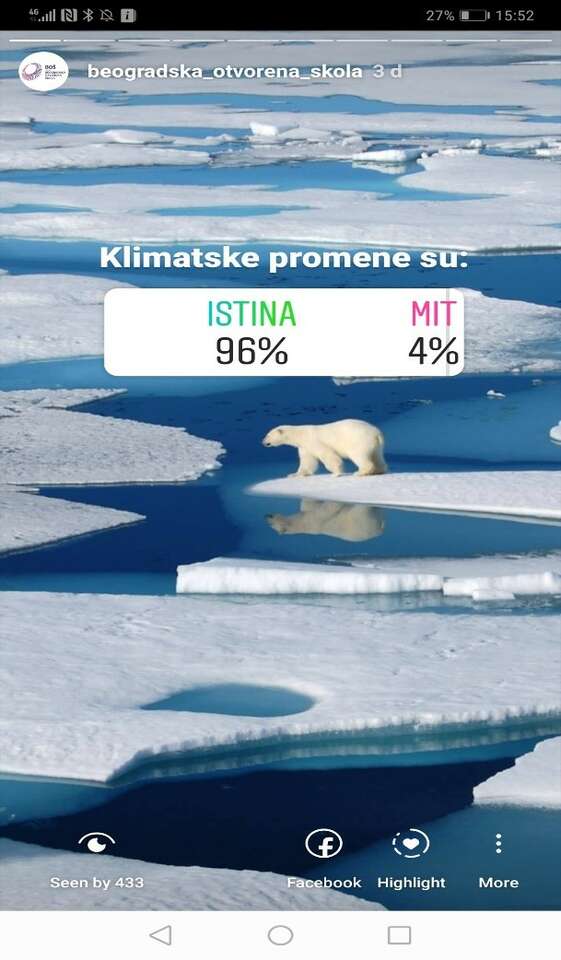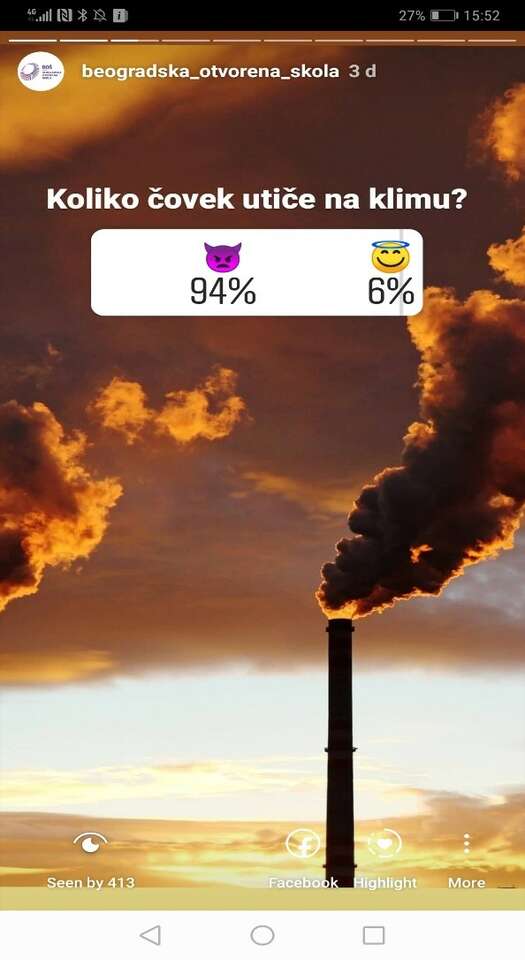Within the project "Climate Change and Protected Areas", which the Belgrade Open School conducts in cooperation with the World Wildlife Fund- WWF Serbia, a workshop "Climate Change, Biodiversity and Protected Areas" was held on 5 July 2019. The workshop was attended by 15 experts in the field of biology, forestry and climate change - and everyone agreed that this is a challenging topic and that multidisciplinary approach is the only solution. The goal of the project is to analyze whether and in what way protected areas have recognized climate change and have incorporated this topic into management plans.
Although climate change is recognized as a threat to protected areas, management plans do not provide measures that would lead to the resilience of protected areas to the adverse effects of climate change. This is just one of the conclusions of the research of the plans and programs of protected area management * in Serbia, presented by Varvara Aleksic, project assistant at BOS.

Professor Vladimir Đurđević, associate professor and researcher at the Faculty of Physics, Institute of Meteorology, University of Belgrade, during the lecture "Views and changes in the future climate in Serbia" emphasized how often the frequency of extreme weather conditions has an impact not only on plants and animals, but also on people and infrastructure. There is more precipitation on the annual level and there is a greater danger of torrential floods. On the other hand, flights "dry" because they have less precipitation on average. If the air humidity is slightly higher (over 60%), all days with over 35 degrees Celsius are critical to human health, as sweating is no longer an effective way of cooling, and there is a danger of hyperthermia. On the other hand, it is important to be aware that whatever action we take in the course of the day, somebody put a charcoal shovel in Obrenovac - whether we are cooking, charging the phone, watching television - we contribute to the CO2 emissions every day.
Dr. Predrag Lazarević, from the Institute of Botany and Botanical Garden "Jevremovac", Faculty of Biology, University of Belgrade, on the topic "Climate change and protection of water and humid habitats of Serbia" spoke about what peat bogs are, how they are created, why they are called carbon bombs (as they collect CO2) and their role in reducing the impact of climate change. He warned that it is difficult to get information about the places where the treasures in Serbia are located and that a cadastre of the peat bogs does not exsist. Active and preserved damp habitats are among the most efficient carbon collectors on the planet. Nevertheless, many have been destroyed due to human activities. It is estimated that around 80% of the estimated peatlands are converted into agricultural and forest areas, peat bogs are used for fertilizer, while others are absorbing hydroenergetic development.
We are witnessing the 6th global extinction, says Dr. Imre Krizmanić, of the Institute of Zoology, Faculty of Biology, University of Belgrade, and climate change is nothing new, they have previously contributed to changes in animals and that certain animals disappeared from the Planet. What now makes the difference is that the man has led to changes that are close to be irreversible. Speaking on the topic "The Impact of Climate Change on Animal Species and Their Habitats", Dr. Krizmanić said that in the population of vertebrates, the rate of extinction is until 2012. was over 60%, and if it continues at that rate, the global animal population can be reduced by 70% by 2020, which is already tomorrow. This contributes to various human activities - climate change, curvature, habitat degradation, disease spread, etc. Birds suffer from climate change shorter flights, while others due to change in weather conditions have ceased migration; rooted by the sea level increase, the egg-laying area is lost, frogs due to lack of precipitation do not have anywhere to lay eggs - these are just some examples of climate change. We need to think about further activities, because adaptation effects on consequences, but not on cause, and we should talk about the resilience of ecosystems to the effects of climate change.
The main objective of the discussion that followed the introductory lectures was the identification of endangered species and habitats within protected areas, as well as defining recommendations for adapting protected areas to climate change, or increasing their resistance to climate change.
Survey "How much do we know about climate change?"
After the workshop, the Belgrade Open School conducted a short survey "How much do we know about climate change?" on its Instagram Profile. The results shows that of the 115 respondents, even 110 believe that climate change is not a myth.


108 respondents believe that man influences climate change.
Nevertheless, many of the respondents are wrong when they say that climate change affects only plant and animal species living in extreme habitats, while to other climate change has no impact. It is surprising that respondents believe that there are less strictly protected species in Serbia than they really have - there are currently 1760 strictly protected plant and animal species in Serbia, which only 22 respondents knew. When asked about how they care about the environment, some of the answers are:
• I do not buy bags,
• I carry a shopping bag,
• I do not park on a green surface,
• Recycle everything that can be recycled,
• Measuring the air quality.
The conclusion of the workshop, but also the survey, is that work on raising awareness and education of all citizens is crucial in responding to the challenges that climate change poses to humanity.
* Protected areas covered by the project "Climate change and protected areas": Tara National Park, Djerdap National Park, Fruska Gora National Park, National Park Kopaonik, Stara Planina Nature Park, Golija Nature Park, Tikvara Nature Park, Special Nature Reserve Gornje Podunavlje, SNR Obedska bara and SNR Karađorđevo.
Varvara Aleksić, Belgrade Open School
Photo source: freepik.com

